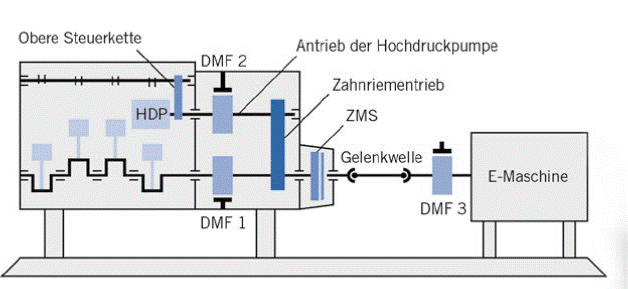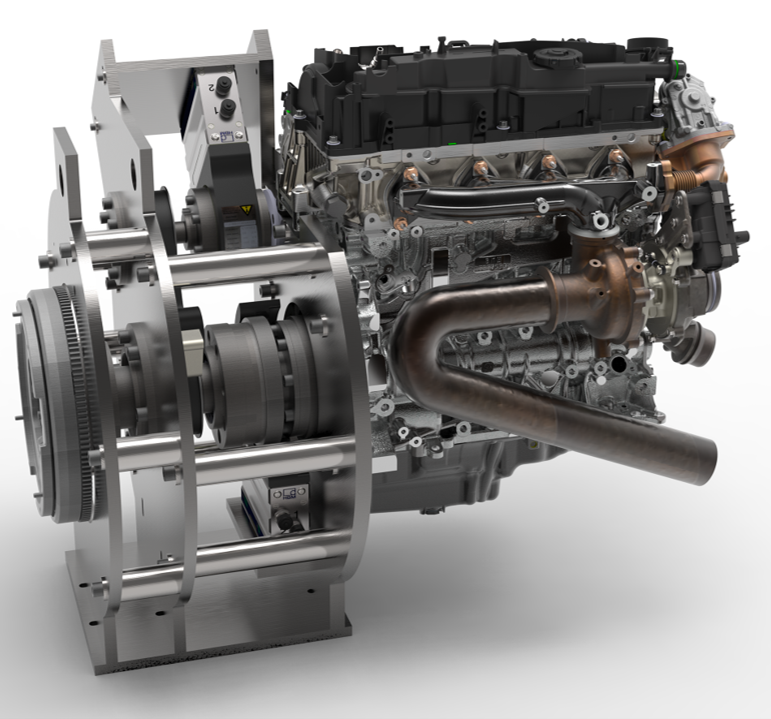Friction Measuring Module
Friction reduction is playing an ever more important role in terms of lower CO2 emissions of the internal combustion engine. To enable friction-reducing measures to be evaluated correctly, a new measuring method was developed at the Graz University of Technology in cooperation with Diesel Engine Development at BMW
When the common processes for measuring friction losses on internal combustion engines are considered, it is possible in principle to differentiate between measurements in drag mode and in combustion mode. The method referred to as the indicating method is a very complicated one and imposes significant demands on the measuring systems; it is used both in combustion and drag modes in order to achieve a high-quality result. To enable the friction losses on individual components to be investigated, the strip-down process is used and usually involves the engine being operated in drag mode. However, operating the engine in drag mode represents a deviation from real operating conditions as a result of the lack of combustion. This has an effect on the component temperatures, maximum cylinder pressure as well as the profile and position of the cylinder pressure. As a further consequence, these deviations can result in incorrect statements and misinterpretations of measurement results, and depending on the particular operating point, they can have a particularly significant effect specifically in the area of the cranktrain friction (real piston clearance, secondary piston movement).
As a result of these interrelationships, a new measuring method has been developed which makes it possible to link the indicating method with the strip-down method, so as to capture the friction of individual engine components under real operating conditions using measuring technology. This strip-down measurement in combustion mode is combined with what is called a friction measuring module designed specifically for three-, four- and six-cylinder diesel engines of BMW for separate measurement of the cranktrain friction in combustion operation. Depending on the particular strip-down condition, coolant and oil conditioning systems are used for controlling the temperature and pressure depending on the operating point.

The friction measuring module is set up following completion of the first strip-down steps involving dismantling the belt drive, coolant pump, oil pump with integrated vacuum pump and counterbalance shaft(s). For this purpose, the lower timing chain, which is used for driving the high pressure pump, is removed and replaced by an external toothed belt drive, which drives the high pressure pump via an additional shaft. The design of the friction measuring module allows the torque to be measured directly at the crankshaft (TMF 1) and the high pressure pump drive (TMF 2) by means of which the torque of the high pressure pump (hpp) and valvetrain is measured. A further torque measuring flange (TMF 3) is installed close to the electrical brake.,

Using this measuring method not only makes it possible to measure the friction but also to measure oil consumption and blow-by without any restriction in terms of the peak cylinder pressure.
Using the newly developed measuring method makes it possible to carry out detailed strip-down investigations in combustion mode on diesel engines of the latest generation, and thereby indicate boundary potentials of individual components. As an application example, investigations were shown on a BMW 1.5-l three-cylinder series-production diesel engine, as are comparative investigations with cylinder shape honing to optimise friction.
Direct measurement of the friction of the cranktrain and also of the high pressure pump component, including the valvetrain should be particularly emphasised. The shape honing configured by simulation revealed advantages in terms of friction and fuel consumption compared to series-production honing. At a load point relevant for NEDC and WLTC, it is possible to assume a consumption reduction of about 1 % in the investigated configuration, even with the engine at normal operating temperature.